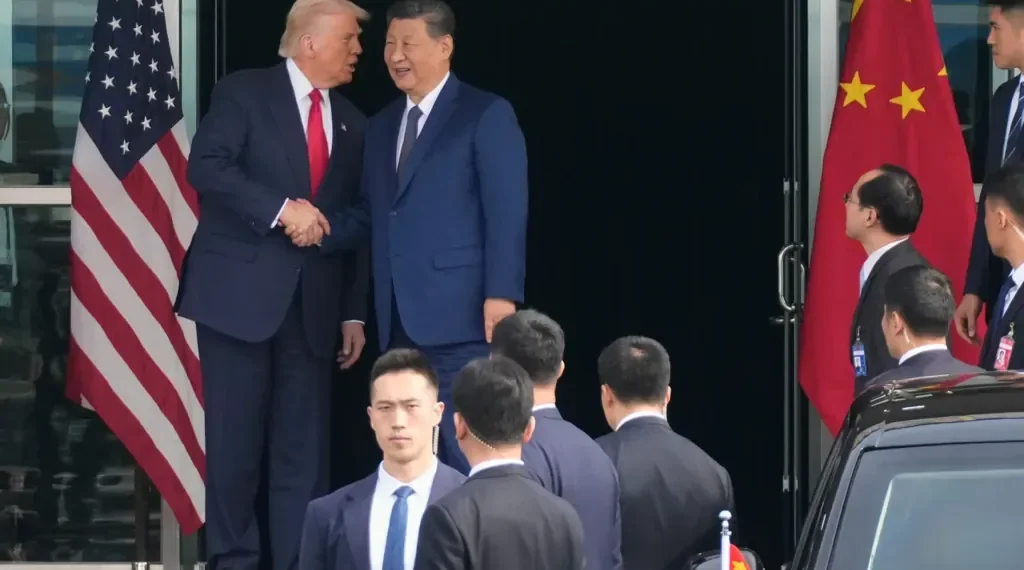U.S. Leads as Largest Beneficiary of Chinese State Bank Loans Amid Security Concerns
A recent report from AidData highlights that the United States has received more funding from Chinese state-owned banks than any other country, totaling $200 billion over the past quarter-century. The financing, often routed through offshore shell companies, has targeted high-tech sectors with potential national security implications. Analysts warn this hidden network reflects a strategic, long-term approach by Beijing to secure global technological influence.
Hidden Lending Networks Across the Globe
China’s state-controlled banks have extended extensive loans to U.S. companies, frequently obscured through shell entities in the Cayman Islands, Bermuda, and Delaware. The AidData report details a sophisticated lending network extending beyond developing nations to wealthy allies including the United Kingdom, Germany, Australia, and the Netherlands.
Former White House investment adviser William Henagan described the network as “China playing chess while the rest of us played checkers,” emphasizing the potential for these financial flows to give Beijing leverage over critical technologies.
Targeting Strategic Technology Sectors
Much of the funding has facilitated Chinese acquisitions of U.S. firms in robotics, semiconductors, and biotechnology. The transactions often remained opaque due to intermediary companies, masking the involvement of Chinese state banks.
The report cites specific examples:
In 2015, Chinese state-owned banks provided $1.2 billion to acquire an 80% stake in Ironshore, an insurer serving clients including U.S. intelligence personnel. The transaction was initially hidden via a Cayman Islands entity.
In 2016, China’s Export–Import Bank funded $150 million to support the acquisition of a Michigan-based robotics equipment company, following Beijing’s publication of its “Made in China 2025” industrial strategy.
By 2017, Chinese-backed entities attempted to acquire a U.S. semiconductor company through Delaware-based shell firms, a deal blocked after investigators traced state ownership.
These examples illustrate a deliberate focus on high-tech and sensitive industries, aligning with Beijing’s broader strategy to secure technological self-sufficiency and global influence.
Global Expansion of Chinese State Lending
AidData’s findings show China has lent more than $2 trillion worldwide from 2000 through 2023, double previous estimates. Beyond the U.S., state lending targeted critical minerals, semiconductors, and other high-tech assets in Europe and allied nations.
Brad Parks, AidData executive director, noted: “The irony is stark — the U.S. warns about predatory Chinese lending, yet it has received the largest share of these state-directed loans.”
Evolving Oversight and Regulatory Challenges
U.S. authorities have strengthened scrutiny through mechanisms such as the interagency Committee on Foreign Investment in the United States (CFIUS). Screening measures were bolstered in 2020 to safeguard sensitive sectors. Despite these efforts, China has expanded overseas bank branches, lending via offshore entities, complicating transparency and regulatory enforcement.
Scott Nathan, former head of the U.S. International Development Finance Corp., emphasized the difficulty in tracing these transactions due to layers of secrecy, shell companies, and confidentiality agreements.
Implications for National Security and Geoeconomics
Experts highlight the strategic dimension of these loans. Brad Setser, adviser to the U.S. Trade Representative, described the practice as part of a broader effort by China to control economic chokepoints and gain leverage over critical technologies.
High-tech sectors targeted include robotics, biotechnology, quantum computing, and semiconductors — essential components for defense systems, telecom networks, and advanced industrial infrastructure. Such acquisitions could allow Beijing indirect access to technology with potential military applications.
Case Studies in Strategic Lending
In 2017, a Chinese state-backed Delaware private equity firm attempted to acquire a U.S. semiconductor company. The deal was blocked after ownership links were uncovered.
In 2022, the United Kingdom forced divestment of a sensitive semiconductor firm acquired through a Dutch entity, which had supplied chips used in consumer electronics but potentially adaptable for military systems.
AidData found that after China’s “Made in China 2025” initiative, cross-border acquisitions targeting sensitive sectors increased from 46% to 88% of state lending activities.
These patterns illustrate the deliberate alignment of financial activity with Beijing’s industrial and technological objectives.
Tracking Chinese State Lending
AidData’s researchers analyzed filings, contracts, and disclosures across more than 200 countries, revealing previously unreported loans in developed economies. The team traced financing hidden behind shell companies and intermediaries, uncovering a shift from traditional development aid toward geoeconomic leverage.
Brad Setser emphasized that understanding these flows is critical for global economic security. “It’s important that we understand what they’re doing, and they don’t make it easy,” he said.
Strategic Implications for the United States
The report underscores a paradox: the U.S., while warning other nations of China’s predatory state lending, has itself received the largest volume of financing. Analysts caution that this could give Beijing long-term leverage over key sectors of the American economy, potentially affecting defense, technology, and critical infrastructure.
Heightened awareness, regulatory oversight, and strategic international coordination are essential to mitigate potential security risks while managing global investment flows.
Outlook and Policy Considerations
As U.S.–China competition intensifies across technology, trade, and geopolitics, the findings highlight the need for comprehensive monitoring of foreign investments. Transparency in cross-border lending, careful review of strategic acquisitions, and enhanced interagency coordination will be critical to balancing economic growth with national security.
The AidData report suggests a future in which state-directed finance serves as a tool of geoeconomic influence, shaping global access to technology and strategic assets across multiple continents.
This article was rewritten by JournosNews.com based on verified reporting from trusted sources. The content has been independently reviewed, fact-checked, and edited for accuracy, neutrality, tone, and global readability in accordance with Google News and AdSense standards.
All opinions, quotes, or statements from contributors, experts, or sourced organizations do not necessarily reflect the views of JournosNews.com. JournosNews.com maintains full editorial independence from any external funders, sponsors, or organizations.
Stay informed with JournosNews.com — your trusted source for verified global reporting and in-depth analysis. Follow us on Google News, BlueSky, and X for real-time updates.













